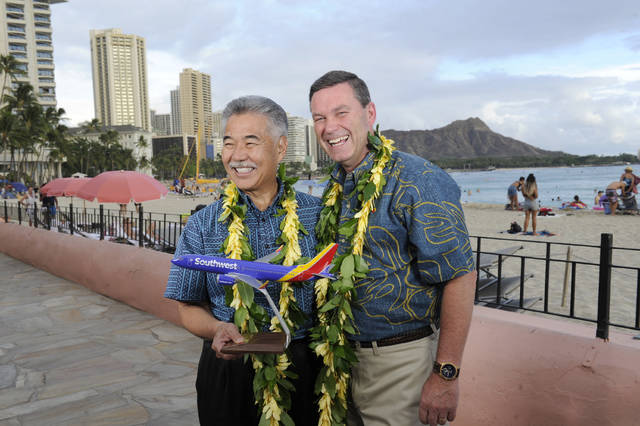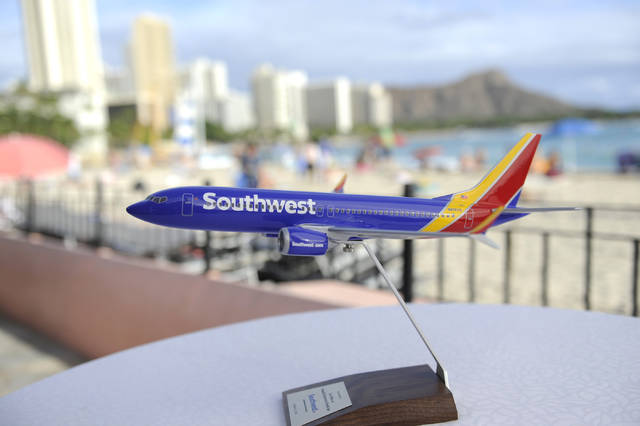HONOLULU — Southwest Airlines officials say starting service to Hawaii is now their primary focus, interisland flying is being seriously considered and they don’t plan on using red-eye flights from the mainland to the islands.
“The big-ticket item right now is just working on Hawaii,” Southwest CEO Gary Kelly said Thursday on an earnings conference call after the Dallas-based carrier reported third-quarter net income increased 30 percent to $503 million and revenue rose 3 percent to $5.27 billion.
“Right now we’re looking at Hawaii and what it’s going to take to start that service,” he added. “Clearly, that will be our next priority.”
Kelly, who said he would provide more details about Southwest’s Hawaii plans during the first quarter, said interisland flying is up for discussion.
“That is an item of interest that customers in Hawaii have, that the state of Hawaii has,” he said. “Step one, of course, is getting from California to Hawaii, but … we’ll have serious consideration for (interisland flying). And who knows, even if we don’t do that initially, it’s something that we would obviously continue to consider over time.”
Southwest Chief Revenue Officer Andrew Watterson, who worked for Hawaiian Airlines as vice president of planning and revenue management from 2011 to 2013, said offering red-eye, or overnight, flights from the mainland to Hawaii is down the list of priorities.
“We don’t really desire to fly red-eyes right now,” he said on the conference call. “For our style of operation, it would complicate things. … So we can do Hawaii without the red-eyes. Whether we feel strongly that there’s a revenue benefit from having the red-eyes, I don’t think we judge that yet.”
Southwest, which for years had talked about its desire to fly to Hawaii, announced Oct. 11 it would begin selling tickets next year. But airline officials declined at the time to announce routes or a start date because of federal certification the airline needs to obtain to fly between the mainland and Hawaii. The Federal Aviation Administration’s ETOPS (Extended Twin Operations) certification, which typically takes six to 12 months, measures how far an aircraft can be safely away from land and over water if one engine gives out.
Southwest Chief Operating Officer Mike Van de Ven said the airline will initiate service to Hawaii with its 175-seat Boeing 737-800 aircraft before switching to Boeing 737 MAX 8 aircraft that the airline began getting delivered in October. The type of aircraft is a change from earlier this month when Southwest said it would begin Hawaii service with the MAX 8.
“We are going to launch with the 800 there,” Van de Ven said on the conference call. “We have that airplane today. It’s ETOPS-capable. And that’s our quickest path to Hawaii. And then we will begin discussing with the FAA what we need to do to have the MAX ETOPS certified. It will be our Hawaii airplane for the future for us and then the foundation for our service.”
On Wednesday the national director for Southwest’s mechanics union (the Aircraft Mechanics Fraternal Association) sent out a statement saying the union will file for a cease and desist order that could disrupt Southwest’s plan to initiate service to Hawaii.
“Southwest Airlines has the lowest ratio of mechanics to aircraft of any major carrier,” AMFA National Director Bret Oestreich said in a statement. “Now the carrier wants to expand its service over open waters without accepting direct responsibility for the airworthiness of its aircraft. Not only is this irresponsible, but it is a direct violation of our contract, and we are not going to allow it to happen.”
Kelly, the CEO, said Thursday there are no stipulations in the company’s labor contracts that would prohibit Hawaii service.









